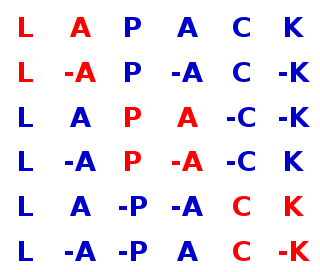
Industry Standard Architecture (ISA) is the 16-bit internal bus of IBM PC/AT and similar computers based on the Intel 80286 and its immediate successors during the 1980s. The bus was (largely) backward compatible with the 8-bit bus of the 8088-based IBM PC, including the IBM PC/XT as well as IBM PC compatibles.

Configuration management (CM) is a systems engineering process for establishing and maintaining consistency of a product's performance, functional, and physical attributes with its requirements, design, and operational information throughout its life. The CM process is widely used by military engineering organizations to manage changes throughout the system lifecycle of complex systems, such as weapon systems, military vehicles, and information systems. Outside the military, the CM process is also used with IT service management as defined by ITIL, and with other domain models in the civil engineering and other industrial engineering segments such as roads, bridges, canals, dams, and buildings.

MIL-STD-188 is a series of U.S. military standards relating to telecommunications.
Endianness is the sequential order in which bytes are arranged into larger numerical values when stored in memory or when transmitted over digital links. Endianness is of interest in computer science because two conflicting and incompatible formats are in common use: words may be represented in big-endian or little-endian format, depending on whether bits or bytes or other components are ordered from the big end or the little end.

In computing, the expansion card, expansion board, adapter card or accessory card is a printed circuit board that can be inserted into an electrical connector, or expansion slot, on a computer motherboard, backplane or riser card to add functionality to a computer system via the expansion bus.
JOVIAL is a high-level computer programming language similar to ALGOL, specialized for the development of embedded systems.
MIL-STD-1750A or 1750A is the formal definition of a 16-bit computer instruction set architecture (ISA), including both required and optional components, as described by the military standard document MIL-STD-1750A (1980).

FIELDATA was a pioneering computer project run by the US Army Signal Corps in the late 1950s that intended to create a single standard for collecting and distributing battlefield information. In this respect it could be thought of as a generalization of the US Air Force's SAGE system that was being created at about the same time.

The HP 2100 was a series of 16-bit minicomputers produced by Hewlett-Packard (HP) from the mid-1960s to early 1990s. Tens of thousands of machines in the series were sold over its twenty-five year lifetime, making HP the fourth largest minicomputer vendor during the 1970s.

LAPACK is a standard software library for numerical linear algebra. It provides routines for solving systems of linear equations and linear least squares, eigenvalue problems, and singular value decomposition. It also includes routines to implement the associated matrix factorizations such as LU, QR, Cholesky and Schur decomposition. LAPACK was originally written in FORTRAN 77, but moved to Fortran 90 in version 3.2 (2008). The routines handle both real and complex matrices in both single and double precision.
WATFIV, or WATerloo FORTRAN IV, developed at the University of Waterloo, Canada is an implementation of the Fortran computer programming language. It is the successor of WATFOR.
The Distributed Array Processor (DAP) produced by International Computers Limited (ICL) was the world's first commercial massively parallel computer. The original paper study was complete in 1972 and building of the prototype began in 1974. The first machine was delivered to Queen Mary College in 1979.
MIL-STD-498 (Military-Standard-498) was a United States military standard whose purpose was to "establish uniform requirements for software development and documentation." It was released Nov. 8, 1994, and replaced DOD-STD-2167A, DOD-STD-7935A, and DOD-STD-1703. It was meant as an interim standard, to be in effect for about two years until a commercial standard was developed.
A United States defense standard, often called a military standard, "MIL-STD", "MIL-SPEC", or (informally) "MilSpecs", is used to help achieve standardization objectives by the U.S. Department of Defense.
Comparison of programming languages is a common topic of discussion among software engineers. Basic instructions of several programming languages are compared here.
The STD Bus is a computer bus that was used primarily for industrial control systems, but has also found applications in computing. The STD Bus has also been designated as STD-80, referring to its relation to the Zilog Z80 series processors. The term STD is in reference to "Standard", but several marketing terms were also promulgated, including Simple To Design, Simple To Debug, and Swift To Deliver.
Theodore Joseph Williams was an American engineer and Professor of Engineering at Purdue University, known for the development of the Purdue Enterprise Reference Architecture.
Absoft Fortran Compilers are set of Fortran compilers for Microsoft Windows, Apple Macintosh, and Linux produced by Absoft Corporation. The compilers are source code compatible across platforms.

RISC-V is an open-source hardware instruction set architecture (ISA) based on established reduced instruction set computer (RISC) principles.









